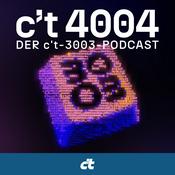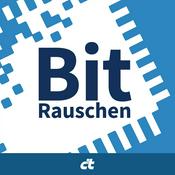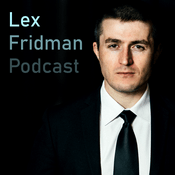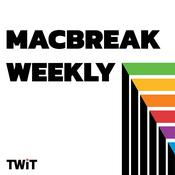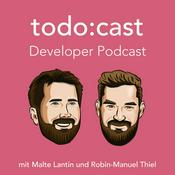35 Episoden

The Institutions are Coming - Noah Pravecek
15.12.2025 | 1 Std. 5 Min.
What does real interoperability actually look like and why might the industry be solving the wrong problems? In this episode, I sit down with Noah Pravecek from ZKsync to explore the evolving landscape of L2 composability, enterprise adoption, and where crypto is actually headed. Noah shares lessons from his previous work on shared sequencing and synchronous composability, and how ZKsync's network approach differs, particularly through Prividiums and their enterprise thesis. We dig into why RWAs are commanding so much attention right now and what that signals for the future. We also swap Devconnect takeaways, discuss the L1 premium question, speculate on what Ethereum can do to improve UX and how to avoid getting nerdsniped by the wrong priorities.Timestamps(00:00) - Working on synchronous composability(04:52) - Reflections on shared sequencers(08:56) - Network of enterprise chains(12:27) - Institutional thesis(14:16) - Onchain capital formation(18:27) - Scaling Ethereum's liquidity(24:49) - RWAs as collateral(28:48) - Different kinds of RWAs(32:35) - Devconnect takeaways(41:39) - Onchain credit markets(45:31) - infoFi applications(49:05) - L1 Premium will fade over time(54:37) - Staying ahead of the innovation curve(56:43) - It takes a village(59:04) - Ethereum should focus on improving UX(1:02:10) - Synchronous composability nerdsnipe DisclaimerNothing in this episode should be interpreted as financial, technical, or legal advice. The host does contract work for Heliax, a public goods laboratory, focusing on Anoma.

FOCIL [Minimize Power of Builders] - soispoke
12.12.2025 | 1 Std. 7 Min.
Why is censorship resistance fundamental to Ethereum and what would it take to actually achieve it? In this episode, I sit down with soispoke from the Ethereum Foundation's Robust Incentives Group (RIG) to unpack FOCIL (Fork-Choice Enforced Inclusion Lists), a proposal aimed at making transaction censorship significantly harder. We start from first principles: what does censorship even mean in Ethereum's context, and what's the difference between weak and strong censorship? From there, we break down how FOCIL works, address recent criticisms, and explore what it could unlock [from better UX to de-risking Ethereum's scaling roadmap]. Soispoke also reflects on the EIP process and where FOCIL currently stands in being scheduled for upcoming Ethereum hard forks within the context of governance.Timestamps(00:00) - From academic to applied research(05:39) - What is censorship, and why CR?(08:43) - Weak censorship on Ethereum(11:57) - Brief history of inclusion lists(17:52) - Fork-choice enforced inclusion list (FOCIL)(20:07) - Steelmanning FOCIL(26:06) - Committee size and trust assumption(29:12) - Rainbow staking compatible(30:12) - Addressing criticism(35:15) - Improved UX for Optimistic Rollups(37:26) - Reflections on ideating FOCIL(40:19) - Communicating FOCIL(43:11) - Defending Ethereum's moat(49:03) - FOCIL improves altruism assumptions(53:03) - Glamsterdam Headliner process(58:46) - FOCIL + 6s slots, we can do both(1:01:25) - Low hanging fruit and beyond DisclaimerNothing in this episode should be interpreted as financial, technical, or legal advice. The host does contract work for Heliax, a public goods laboratory, focusing on Anoma.

This is not Meta - Ceteris
02.12.2025 | 1 Std. 29 Min.
In this episode of Deeply Intents I chat with Ceteris, Head of Research at Delphi. We start by discussing Ceteris' beginnings on crypto twitter, then dig into 4 year cycles—are they still real? From there we cover metas, onboarding, privacy, capital formation, and infrastructure. We also explore why Solana has performed well "this cycle," including social factors and upcoming upgrades. Later we get into prediction markets, hyperfinancialization, and investing. We wrap up with Ceteris sharing his best advice for surviving this game long term. Timestamps(00:00) - Welcome to CT(07:22) - Unique perspectives on infrastructure(13:48) - Do cycles still exist?(17:59) - Few assets do well(23:28) - DeFi summer cycle was different(28:02) - Early in a new meta(29:47) - Onboarding into crypto(33:43) - Privacy as a king maker(37:19) - Capital formation use case(42:24) - Too much of the wrong infra(47:08) - New things take time to build(49:43) - Rollup specialization(51:16) - Why build on Solana?(53:32) - RWA issuance is a weird narrative(57:05) - Prop AMMs, BAM, ACE, MCP, Firedancer(1:00:53) - You eat what you kill(1:04:19) - Prediction markets and sports betting(1:09:38) - The whole world is becoming financialized(1:13:00) - Investing in bid ideas(1:19:07) - How to survive? Don't blow up!(1:26:12) - Try things out(1:27:38) - Shitposting on CT DisclaimerNothing in this episode should be interpreted as financial, technical, or legal advice. The host does contract work for Heliax, a public goods laboratory, focusing on Anoma.

One CLOB to Rule them All - Markus
14.11.2025 | 1 Std. 8 Min.
In this episode of Deeply Intents, I chat with Markus, founder of Tplus. We begin the episode by addressing the FUD around the recent Intel TDX attack. Next, we unpack Tplus by dissecting the high-level architecture. Thereafter we discuss how Tplus can benefit traders, solvers, MEV searchers, and block builders. Later Markus breaks down the events that led to the sell-off on 10/10/25. We finish the episode by discussing Tplus' revenue model and thinking from first principles. Timestamps(00:00) - How the cake is made (03:52) - Tplus etymology (06:34) - TDX FUD (11:58) - Tplus architecture (16:15) - Product surface expands with DeFi (18:44) - Breaking down cross-margin (23:53) - Markouts (26:06) - Everything in one box (28:25) - Vaults (31:04) - Orderflow on demand (34:57) - Is the juice worth the squeeze? (38:21) - B2C strategy (43:14) - Compossability with onchain liquidity (46:17) - Balancing founder priorities (48:08) - 10/10/25 (52:00) - ADL risk (53:27) - Adding product features (58:14) - Specialized market making (1:01:15) - Revenue model (1:03:57) - Ethereum and Solana upgrades (1:05:11) - Think from first principles DisclaimerNothing in this episode should be interpreted as financial, technical, or legal advice. The host does contract work for Heliax, a public goods laboratory, focusing on Anoma.

One Click Ethereum - Mislav
10.11.2025 | 1 Std. 9 Min.
In this episode of Deeply Intents, I chat with Mislav from Biconomy. We begin the episode by discussing the Biconomy Network’s one signature execution model. Next, we discuss the purpose of interoperability and chain abstraction. Thereafter, we dig our teeth into all things product, from gauging user feedback to building at the right level of abstraction to knowing who your team is. Next up, we unpack Biconomy's Supertransaction API, censorship resistance, misconceptions, and competition. We finish the conversation by reflecting on lessons learned over the years, building on the EVM, whilst speculating on potential Ethereum upgrades that would be advantageous.Timestamps (00:00) - Building on Ethereum(03:14) - One signature execution(11:24) - Why not just use the L1?(18:06) - Delivering chain abstraction(20:03) - Products at the right level of abstraction(24:32) - Talking to users(28:54) - Knowing who you are(36:00) - SuperTransaction API(40:42) - Zero setup for app developers(46:23) - Landing transactions(48:24) - Censorship resistance(52:30) - Addressing misconceptions(54:43) - Competition(56:51) - Use blockchains, lessons in there(1:00:43) - Ethereum upgrades and standardization(1:07:00) - Apps choose trust assumptions DisclaimerNothing in this episode should be interpreted as financial, technical, or legal advice. The host does contract work for Heliax, a public goods laboratory, focusing on Anoma.
Weitere Technologie Podcasts
Trending Technologie Podcasts
Über Deeply Intents
Höre Deeply Intents, c't 4004 – der c't-3003-Podcast und viele andere Podcasts aus aller Welt mit der radio.de-App

Hol dir die kostenlose radio.de App
- Sender und Podcasts favorisieren
- Streamen via Wifi oder Bluetooth
- Unterstützt Carplay & Android Auto
- viele weitere App Funktionen
Hol dir die kostenlose radio.de App
- Sender und Podcasts favorisieren
- Streamen via Wifi oder Bluetooth
- Unterstützt Carplay & Android Auto
- viele weitere App Funktionen


Deeply Intents
App laden,
loshören.
